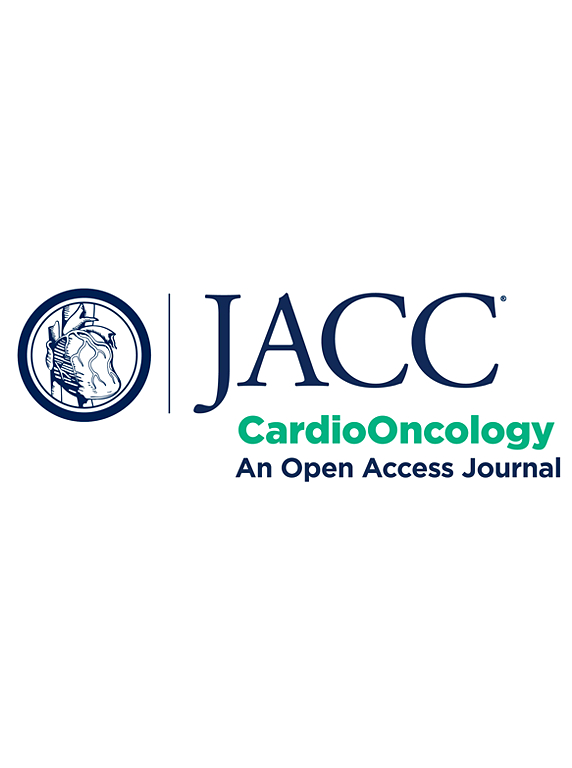Diagnostic Performance of the New Free Light Chain Ratio in Systemic Amyloidosis
IF 12.8
1区 医学
Q1 CARDIAC & CARDIOVASCULAR SYSTEMS
引用次数: 0
Abstract
Background
Detection of monoclonal components (MCs) using serum and urine immunofixation (IFE) and free light chain measurement is a critical early step in diagnosing cardiac amyloidosis. Patients with MCs are referred for biopsy-based diagnostic work-up. New reference ranges for the free light chain ratio (FLCR), adjusted for age and estimated glomerular filtration rate, have been proposed.
Objectives
The aim of this study was to compare the diagnostic performance of the new vs the conventional FLCR in patients with light chain (AL) amyloidosis and wild-type transthyretin (ATTRwt) amyloidosis.
Methods
The analysis included 1,705 patients with AL amyloidosis and 675 with ATTRwt amyloidosis.
Results
In the AL cohort, 44 patients (3%) had negative results on serum and urine IFE at diagnosis. Among these, 13 patients had normal conventional FLCRs and 15 had normal new FLCRs, with no significant difference in diagnostic sensitivity (70.4% [95% CI: 55.8%-82.5%] vs 65.9% [95% CI: 50.0%-79.5%]; P = 0.82). Overall diagnostic sensitivity for MC detection was similar between the new and conventional FLCRs (99.2% vs 99.1%). Among patients with ATTRwt amyloidosis and negative serum and urine IFE results, 156 (26.5%) had abnormal FLCRs using the conventional cutoff, compared with only 12 (2%) using the new FLCR. At hematologic response assessment in AL amyloidosis, concordance in the definition of complete response between the 2 FLCR methods was 94.9% (95% CI: 93.4%-95.9%).
Conclusions
The new FLCR demonstrates equivalent diagnostic sensitivity in AL amyloidosis and can be integrated into complete response criteria. In patients with suspected ATTRwt amyloidosis, it significantly reduces the proportion of FLCR-only abnormalities, thereby limiting the need for biopsy confirmation.
新游离轻链比在全身性淀粉样变性中的诊断价值。
背景:利用血清和尿液免疫固定(IFE)和游离轻链检测单克隆成分(MCs)是诊断心脏淀粉样变性的关键早期步骤。MCs患者被转诊进行基于活检的诊断检查。自由轻链比(FLCR)的新参考范围,根据年龄和估计的肾小球滤过率进行了调整。目的:本研究的目的是比较新型与传统FLCR在轻链(AL)淀粉样变性和野生型甲状腺转蛋白(ATTRwt)淀粉样变性患者中的诊断性能。方法:对1705例AL型淀粉样变患者和675例attrt型淀粉样变患者进行分析。结果:在AL队列中,44例(3%)患者在诊断时血清和尿液IFE结果为阴性。其中,13例患者常规flcr正常,15例患者新flcr正常,诊断敏感性无显著差异(70.4% [95% CI: 55.8% ~ 82.5%] vs 65.9% [95% CI: 50.0% ~ 79.5%]; P = 0.82)。新型和传统FLCRs对MC检测的总体诊断敏感性相似(99.2% vs 99.1%)。在患有ATTRwt淀粉样变性且血清和尿液IFE结果阴性的患者中,156例(26.5%)使用传统的截止值有异常的FLCR,而使用新的FLCR只有12例(2%)。在AL淀粉样变性的血液学反应评估中,两种FLCR方法在完全缓解定义上的一致性为94.9% (95% CI: 93.4%-95.9%)。结论:新的FLCR对AL淀粉样变性具有相当的诊断敏感性,可纳入完全缓解标准。在疑似ATTRwt淀粉样变的患者中,它显著降低了仅flcr异常的比例,从而限制了活检确认的需要。
本文章由计算机程序翻译,如有差异,请以英文原文为准。
求助全文
约1分钟内获得全文
求助全文
来源期刊

Jacc: Cardiooncology
Multiple-
CiteScore
12.50
自引率
6.30%
发文量
106
期刊介绍:
JACC: CardioOncology is a specialized journal that belongs to the esteemed Journal of the American College of Cardiology (JACC) family. Its purpose is to enhance cardiovascular care for cancer patients by publishing high-quality, innovative scientific research and sharing evidence-based knowledge.
The journal aims to revolutionize the field of cardio-oncology and actively involve and educate professionals in both cardiovascular and oncology fields. It covers a wide range of topics including pre-clinical, translational, and clinical research, as well as best practices in cardio-oncology. Key areas of focus include understanding disease mechanisms, utilizing in vitro and in vivo models, exploring novel and traditional therapeutics (across Phase I-IV trials), studying epidemiology, employing precision medicine, and investigating primary and secondary prevention.
Amyloidosis, cardiovascular risk factors, heart failure, and vascular disease are some examples of the disease states that are of particular interest to the journal. However, it welcomes research on other relevant conditions as well.
 求助内容:
求助内容: 应助结果提醒方式:
应助结果提醒方式:


